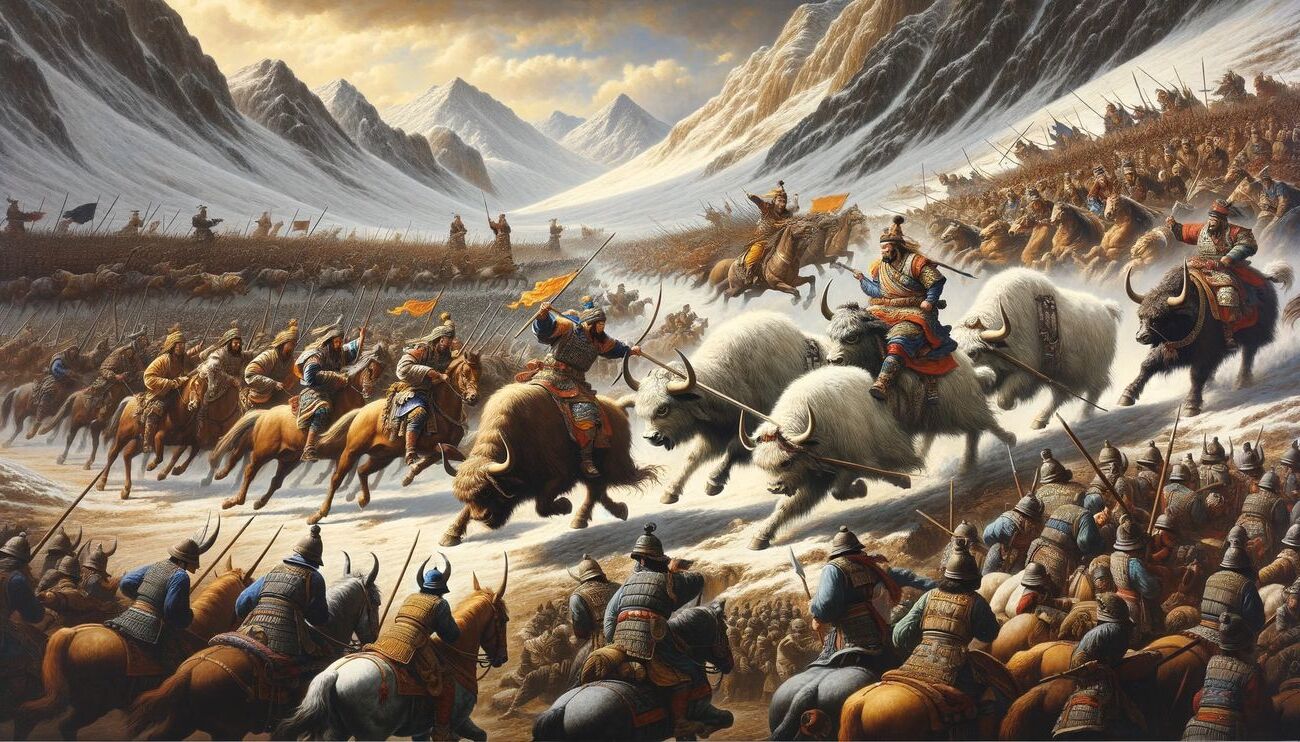
Did you know the Muslim Conquest of Persia reshaped history? This monumental event, spanning from 633 to 654 AD, marked the end of the Sassanian Empire and the rise of Islamic influence in Persia. The conquest wasn't just a series of battles; it was a cultural and religious transformation. Persian art, science, and literature flourished under new Islamic rule. The blend of Persian and Islamic cultures created a rich tapestry that influenced the entire region. Why did the Muslim Conquest of Persia succeed? Factors like strategic military tactics, internal strife within the Sassanian Empire, and the appeal of Islam played crucial roles. This conquest not only altered Persia's destiny but also left an indelible mark on world history.
Key Takeaways:
- The Muslim conquest of Persia marked the end of the Sassanian Empire and the rise of Islamic influence, leading to cultural, religious, and economic changes that shaped the region's identity and legacy.
- Notable battles, strategies, and figures played pivotal roles in the conquest, impacting Persian culture, governance, and the spread of Islam, leaving a lasting legacy still evident today.
The Beginning of the Conquest
The Muslim conquest of Persia, also known as the Arab conquest of Iran, was a pivotal event in history. It marked the end of the Sassanian Empire and the rise of Islamic influence in the region.
- The conquest began in 633 AD, during the reign of Caliph Abu Bakr.
- The Sassanian Empire, which had ruled Persia for over 400 years, was in decline due to internal strife and external pressures.
- The Battle of Hira in 633 AD was one of the first major battles, resulting in a Muslim victory.
- The Muslim forces were led by Khalid ibn al-Walid, a prominent military commander.
- The Sassanian army was initially caught off guard by the rapid and strategic advances of the Muslim forces.
Key Battles and Strategies
Several key battles and strategies played crucial roles in the Muslim conquest of Persia. These battles showcased the tactical brilliance of the Muslim commanders and the resilience of their forces.
- The Battle of Qadisiyyah in 636 AD was a decisive victory for the Muslims, leading to the capture of the Sassanian capital, Ctesiphon.
- The use of mobile cavalry units gave the Muslim forces a significant advantage over the more rigid Sassanian formations.
- The Battle of Nahavand in 642 AD, often referred to as the "Victory of Victories," effectively ended Sassanian resistance.
- Muslim forces employed psychological warfare, spreading rumors to demoralize the Sassanian troops.
- The capture of key cities like Isfahan and Hamadan further weakened the Sassanian hold on Persia.
Cultural and Religious Impact
The conquest had profound cultural and religious implications, transforming the region's identity and laying the foundation for the spread of Islam.
- Zoroastrianism, the dominant religion of the Sassanian Empire, saw a significant decline as Islam spread.
- Many Persian scholars and scientists converted to Islam, contributing to the Islamic Golden Age.
- Persian language and culture influenced Islamic civilization, leading to a rich cultural synthesis.
- The construction of mosques and madrasas (Islamic schools) became widespread in the newly conquered territories.
- The introduction of Arabic as the administrative language facilitated communication and governance.
Economic and Social Changes
The conquest also brought about significant economic and social changes, reshaping the lives of the people in the region.
- The introduction of Islamic taxation systems, such as Zakat and Jizya, altered the economic landscape.
- Trade routes were secured and expanded, boosting commerce and prosperity.
- The Muslim rulers implemented land reforms, redistributing land to the peasantry.
- The social hierarchy shifted, with new opportunities arising for those who embraced Islam.
- The establishment of new cities and infrastructure projects improved living conditions.
Resistance and Rebellions
Despite the rapid success of the Muslim conquest, there were instances of resistance and rebellion from the local population.
- The Sassanian prince, Yazdegerd III, continued to resist Muslim forces until his death in 651 AD.
- Several local Persian leaders organized rebellions, attempting to reclaim their territories.
- The Battle of Rayy in 651 AD saw a fierce resistance from the local population before falling to the Muslims.
- The Mazdakite movement, a socio-religious reform movement, gained momentum during this period of upheaval.
- Some Zoroastrian communities fled to remote areas, preserving their religious practices.
Legacy of the Conquest
The legacy of the Muslim conquest of Persia is still evident today, influencing the region's culture, religion, and politics.
- The Persian influence on Islamic art, literature, and architecture is profound and enduring.
- The spread of Persian administrative practices helped shape the governance of the Islamic Caliphate.
- The blending of Persian and Islamic traditions gave rise to unique cultural expressions, such as Persian poetry.
- The conquest facilitated the spread of knowledge, with Persian scholars playing key roles in various fields.
- The region's strategic importance grew, becoming a vital part of the Islamic world.
Notable Figures
Several notable figures emerged during the Muslim conquest of Persia, leaving lasting legacies.
- Khalid ibn al-Walid, known as the "Sword of Allah," was instrumental in many key battles.
- Sa'd ibn Abi Waqqas, another prominent commander, led the Muslim forces at the Battle of Qadisiyyah.
- Yazdegerd III, the last Sassanian emperor, became a symbol of Persian resistance.
- Salman the Persian, a companion of the Prophet Muhammad, played a significant role in the conquest.
- Al-Muthanna ibn Haritha, a tribal leader, contributed to early victories in the campaign.
The Aftermath
The aftermath of the conquest saw the consolidation of Muslim rule and the integration of Persia into the Islamic world.
- The establishment of the Umayyad Caliphate brought stability to the region.
- The Abbasid Caliphate, with its capital in Baghdad, became a center of learning and culture.
- Persian scholars, such as Avicenna and Al-Farabi, made significant contributions to science and philosophy.
- The Persian New Year, Nowruz, continued to be celebrated, reflecting the enduring cultural heritage.
- The region's strategic location facilitated the spread of Islam to Central Asia and beyond.
The End of an Era
The Muslim Conquest of Persia marked a significant turning point in history. This event led to the fall of the Sassanian Empire and the spread of Islam across Persia. The conquest wasn't just a military victory; it brought profound cultural, religious, and social changes. Persian culture, however, didn't vanish. Instead, it blended with Islamic traditions, creating a rich, unique heritage that still influences the region today. The conquest also paved the way for the Golden Age of Islam, where science, art, and literature flourished. Understanding this historical event helps us appreciate the complexities of cultural integration and the lasting impact of historical conquests. The Muslim Conquest of Persia is a testament to how history shapes the present, reminding us of the intricate tapestry of human civilization.
Frequently Asked Questions
Was this page helpful?
Our commitment to delivering trustworthy and engaging content is at the heart of what we do. Each fact on our site is contributed by real users like you, bringing a wealth of diverse insights and information. To ensure the highest standards of accuracy and reliability, our dedicated editors meticulously review each submission. This process guarantees that the facts we share are not only fascinating but also credible. Trust in our commitment to quality and authenticity as you explore and learn with us.


